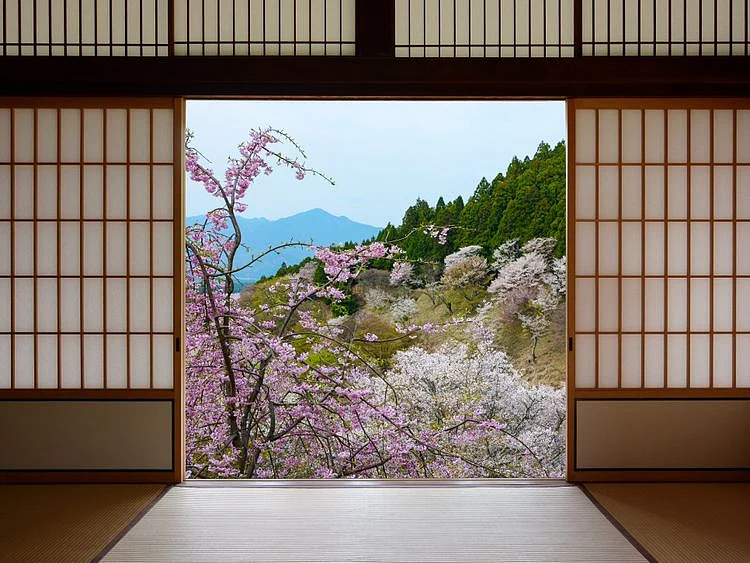Bring peaceful Zen-style interiors home in 7 steps
This Japanese design style uses minimalist, sleek furniture for Nature-inspired harmony

Cherry blossom petals are falling in soft pink showers from trees overlooking neat streets.
This is a scene we warmly associate with Japan, as much as we do clean, minimal interiors – tatami mats, a futon in the middle of the room and barely anything else. An understated sense that everything that is in the home is there because it needs to be – it serves a purpose.
The world of interiors began to call this style Zen. According to Merriam-Webster, the concept itself is a state of calm attentiveness in which one’s actions are guided by intuition rather than by conscious effort.
“Zen is a way of thinking, and the art of tea ceremony, flower arrangement, ink painting, Noh (Japanese classical dance-drama), architecture, interior design and landscaping are all based on this idea,” explains Noriyoshi Muramatsu, award-winning architect, designer and founder of Tokyo-based Studio Glitt that is behind the design of Zuma Japanese restaurant, Dubai. “Originally, people from outside of Japan saw the simple Japanese design and started to call it Zen-style, which then spread to the masses”
“Zen-style is not something that Japanese people are particularly aware of, and I don't think Japanese creators are aware of it either… but if you were to ask me what the definition is, I would say that it is this process of subtraction, of carefully selecting only what is truly necessary and avoiding waste, resulting in a simple design that is refreshing, clean and rich.”
For your home, think pale, neutral colours, natural textures and open spaces to create your own airy and peaceful sanctuary. Here’s how to do it:
1. Less is more: Carefully select your pieces for no clutter
Muramatsu says, “In the design of a house, it is important not to design everything, but to leave room for what is not designed… like sushi, it [Zen-style] is simple in appearance, but it respects and carefully selects its materials to make the most of their qualities.
“In a Japanese ink painting, there are many blank spaces that are not painted. The artist does not include everything they want to express, but leaves some room for the viewer's imagination, and this is how the work is completed.”
So, mindfully prioritise space, necessity and clean lines when designing your home – or just give it an extended de-clutter as per Marie Kondo’s famous joy-oriented method.
2. Go for neutral, Nature-inspired colours in solid fabrics
For a balanced look, use solid block colours that are neutral such as beige, brown, dark green or cream in a tonal or monochromatic colour palettes (palettes made of one colour with various tints or tones of the colour included) for upholstery, curtains and bedding.
Natural fabrics such as cotton, jute, linen work best.
3. Bring Nature-inspired elements home
“The design of a Zen-style house is a collaboration between Nature and the inhabitants,” says Muramatsu. For this, use natural textures such as rattan weaves, raw or solid wood, bamboo furniture and indoor plants for example. Flooring is typically wooden as well.
As for lighting, use soft, warm accent light such as wall sconces, lamps and include lots of sunlight for the airy lightness of Zen. He adds, “In lighting, it is important to consider where to light and where not to light, to design shadows, a balance of yin and yang.” You could also include a translucent sliding door or two to separate spaces while maintaining an airy look.
You can also include gentle, natural scents spread by a diffuser.
Muramatsu says, “The choice of materials does not have to be expensive, but it is important to respect the materials and to use them in a way that makes the most of them, so that they coexist with nature in a way that will last for many years.”
4. Choose simple and loved things to place at home
Muramatsu says, “The design of a house should be very simple…. The identity of the space should be defined by the display of art and objects that the inhabitants really like, in order to leave room for the inhabitants to enjoy their home more and more, changing with the seasons, their moods and their family structure.
“In addition, the simplicity of the space is the best way to enhance the beauty of the owner's hobbies and art, and to allow for any taste.”
Also, keep away from an eclectic mix of heavily patterned or ruffled fabrics, wallpapers – and instead opt for simple furniture with clean lines, exposed surfaces and little or no ornament.
5. Low height furniture
Traditional Japanese homes are known for their low-height tables for dining while sitting on cushions on the floor, and incorporating this can be a strong way of channeling Zen-style interiors.
6. Simple, geometric shapes
With its emphasis on the ‘simple bare necessities’, shapes are important in Zen interiors. Use furniture and décor with clean, geometric lines such as a rectangular sofa with tapered legs.
7. Fluidity in furniture
Muramatsu says that fluidity is characteristic of Zen-style furniture, so look for multipurpose things as well: “The first is, a design that is not completely limited in its use – but leaves room for the user to perfect it according their own uses. For example, the Japanese Zabuton-cushion can be used as a seat cushion, a pillow or a coverlet - it is a simple design that can be changed freely according to the user's purpose.”
(Note: First published on September 23, 2022)
Sign up for the Daily Briefing
Get the latest news and updates straight to your inbox
Network Links
GN StoreDownload our app
© Al Nisr Publishing LLC 2025. All rights reserved.